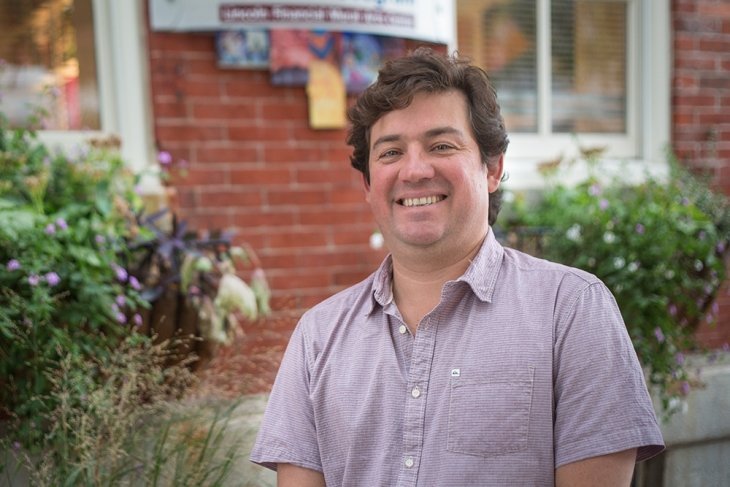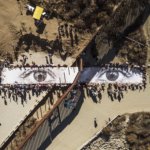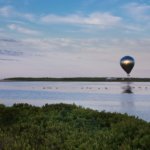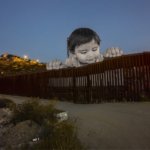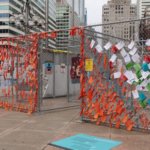Pedro Alonzo is an independent art curator and the brand new advisor to the Humanitas360 Institute. A scholar who researches powerful works that question violence, mass incarceration and xenophobia, Alonzo talked to H360 about how art can help to engage citizens to think about the upsurge of radical ideologies, especially in a period as difficult as that of a pandemic. “I see the pandemic as revealing the effects of systemic forms of inequality and misguided political leadership. The rise in nationalism, populism and the election of poor leaders is a consequence of global discontent fueled by inequality,” he says. For the future, he foresees a chance to produce works in a collaborative and multidisciplinary fashion with other colleagues. Alonzo also suggested works by other artists who deal with social issues, such as JR, Sam Durant and Swoon. Read below.
Your work is obviously concerned about social issues, and we couldn’t start this conversation without talking about the coronavirus pandemic. As you and your work focuses so much on climate apprehension and about immigration issues, the growing presence of nationalism and populism, how do you see this current crisis?
Great question. I see the pandemic as revealing the effects of systemic forms of inequality and misguided political leadership. The rise in nationalism, populism and the election of poor leaders is a consequence of global discontent fueled by inequality. An aggravated and poorly informed population, that feels cheated by a corrupt elite, is voting to empower a growing crop of fear mongering populist heads of state. Political leaders that promise change, who when elected subvert the authority of institutions such as the judicial system and the credibility of the media establishment in order to consolidate power. Sadly, this comes at a time when strong institutions, credible information and international cooperation are critical to addressing global challenges. The pandemic verifies that the isolationist policies of many elected leaders are ill-equipped to deal with the coronavirus and climate change. Nations must work together across borders in order to meet these global challenges. However, gaining the public trust is complicated when a large segment of the population feels cheated by business and political leaders as public funds are regularly misspent or stolen and the creation of wealth is concentrated into very few hands. The complexity of the situation is compounded by rampant misinformation and the prevalence of information echo chambers. The public, politicians and business leaders all hear what they want.
How can art help to engage citizens?
Experts often lack the ability to speak convincingly to individuals outside their field of expertise. They are often encumbered from creating a compelling narrative by proving a point with overwhelming facts and/or science. Artists are generally free of having to prove their ideas, they can create compelling narratives that draw attention to issues or visualize desired outcomes by humanizing the issue. George Orwell’s “1984” is an excellent examples of a literary work that reveals the perils of technology and authoritarian regimes. I do my best work the I can bringing the right partners together such as an expert with the facts and the artist who can create a compelling narrative that a general audience can be drawn to and understand. That is a winning combination that can often get passed information echo chambers and preconceived notions.
Has the perception of what you’ve done so far changed with this pandemic situation? “Amnesia Atómica”, for example, could always be reinterpreted facing the present. Now it remembers us of the risks and benefits of scientific discourses…
Although the pandemic has widely renewed respect for experts and data, the fear and uncertainty have also produced misinformation and conspiracy theories. The lack of clear messaging from leaders makes it easier for the public to hear what they want to hear. I began working with Pedro Reyes and the Bulletin of the Atomic Scientists before the outbreak of the Pandemic. Early this year, in conversation with Rachel Bronson, the President of the Bulletin, I was pointing out the challenges that experts often have in creating compelling narratives that the public can get behind. Rachel responded by pointing out that in spite of the challenge of speaking to a broader public, experts have facts and deep knowledge, which is critical in order to move forward and take educated action. Her statement made me realize that the combination of the facts provided by experts and the compelling narrative created by creatives such as artists, writers of filmmakers is a winning combination. Rachel’s comments invigorated my desire to work with experts and artists. The pandemic has reinforced my interest in developing multidisciplinary projects, in spite of the challenge of getting people, artists or experts, to work outside their comfort zone.
5 art pieces chosen by Pedro Alonzo:
1 – JR – Picnic Border, on immigration in the United States and Mexico
2 – Doug Aitken – New Horizon, concern over the uncertain future
3 – JR – Kikito, on immigration in the United States and Mexico
4 – Sam Durant – Labyrinth, mass incarceration
5 – Pedro Reyes – Amnesia Atomica, nuclear threat

